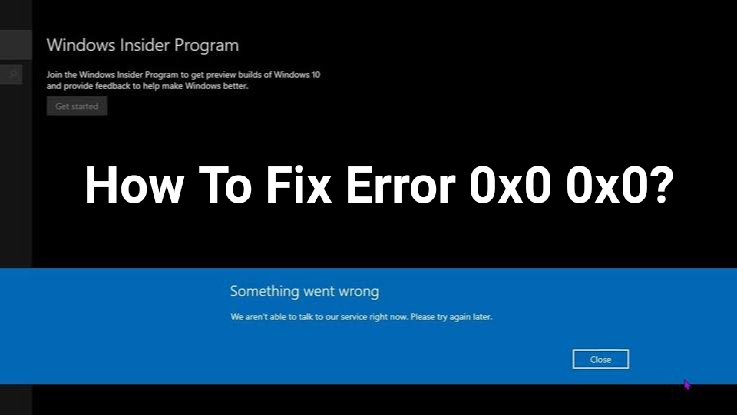Ever stumbled upon the 0x0 0x0 error on your Windows computer and wondered what it means? You’re not alone. This error is a common hiccup that many Windows users face. In essence, it’s your computer’s way of saying something’s not right. Most of the time, it’s fixable with a few simple steps. Before diving deep into the technicalities, here’s a quick solution for many:
- Restart your computer.
- Ensure you’ve updated Windows to its latest version.
- Run a quick malware scan.
These steps alone can resolve a significant chunk of these errors, setting your computer back on track. If not, don’t worry; we’ve got a detailed guide ahead to help you out.
Fixing the 0x0 0x0 Error: Step-by-Step Guide
Below are the step-bystep guide on how to fix 0x0 0x0 Error in computer/windows:
- Restart Your Computer: Often, the simplest solution can be the most effective. Give your system a fresh start.
- Update Windows: Ensure you’re running the latest version of Windows. Regular updates can fix known bugs and vulnerabilities.
- Run System Checks: Tools like the System File Checker (SFC) and the Windows Memory Diagnostic Tool can identify and rectify issues.
- Check for Malware: Regularly scan your system using trusted antivirus software.
- Update Drivers: Outdated drivers can be a hidden cause behind many errors. Regularly check for and install driver updates.
- Use Windows Troubleshooter: This built-in tool can automatically diagnose and fix common problems.
- Reinstall Corrupted Programs: If a particular software seems to be the issue, consider reinstalling it.
While the above steps can help you address the 0x0 0x0 error, the best approach is always preventative. Regularly updating your software, scanning for malware, and ensuring your hardware is in good condition can keep many errors at bay.
What is 0x0 0x0 Error in Windows?
The 0x0 0x0 error in Windows is a system error code that users might encounter during various operations on their computer. This code, while seemingly cryptic, is essentially a message from the operating system indicating that a specific operation failed or encountered an issue.
Causes of Error
- Software Bugs: Glitches or issues in software applications, including incompatible or outdated drivers, can trigger this error.
- Corrupted System Files: Over time, essential system files can become corrupted due to various reasons, such as unexpected shutdowns or malware infections. When the system tries to access these corrupted files, it might throw the 0x0 0x0 error.
- Hardware Issues: Problems related to the computer’s hardware, such as failing hard drives, problematic RAM modules, or other malfunctioning components, can lead to this error.
- Incomplete Installations: If a software installation or update is interrupted or doesn’t complete successfully, it can leave behind corrupted files or configurations, leading to the error.
- Malware or Virus Infections: Malicious software can modify or damage system files, causing various errors, including the 0x0 0x0.
- Registry Issues: The Windows Registry, a database storing configuration settings and options, can sometimes have errors or corruptions, leading to system errors.
- Resource Limitations: If the system is overwhelmed, running multiple resource-intensive applications simultaneously, it might not handle operations correctly, resulting in errors.
Understanding the root cause of the 0x0 0x0 error is crucial for its effective resolution. Depending on the cause, different troubleshooting steps might be required to resolve the issue. You’ll also love our guide on How to bypass Yahoo Verification Code?
Conclusion
Errors like 0x0 0x0 can be daunting, but with a systematic approach, they’re manageable. By understanding the causes, taking preventative measures, and knowing how to troubleshoot, you can ensure a smoother, error-free computing experience. If all else fails, don’t hesitate to seek professional help or consult online forums for more specific solutions.
